I’ve written hundreds of reviews, previews, and retrospectives during my twenty-odd years as a games inspector. As many of these appeared in the British version of PC Gamer magazine and nowhere else, now and again something from my archive may appear as one of THC’s daily posts. In 2011 the (then) thirteen-year-old Battlezone persuaded me to shelve Shermans, Spitfires, and Sten guns for a spell.
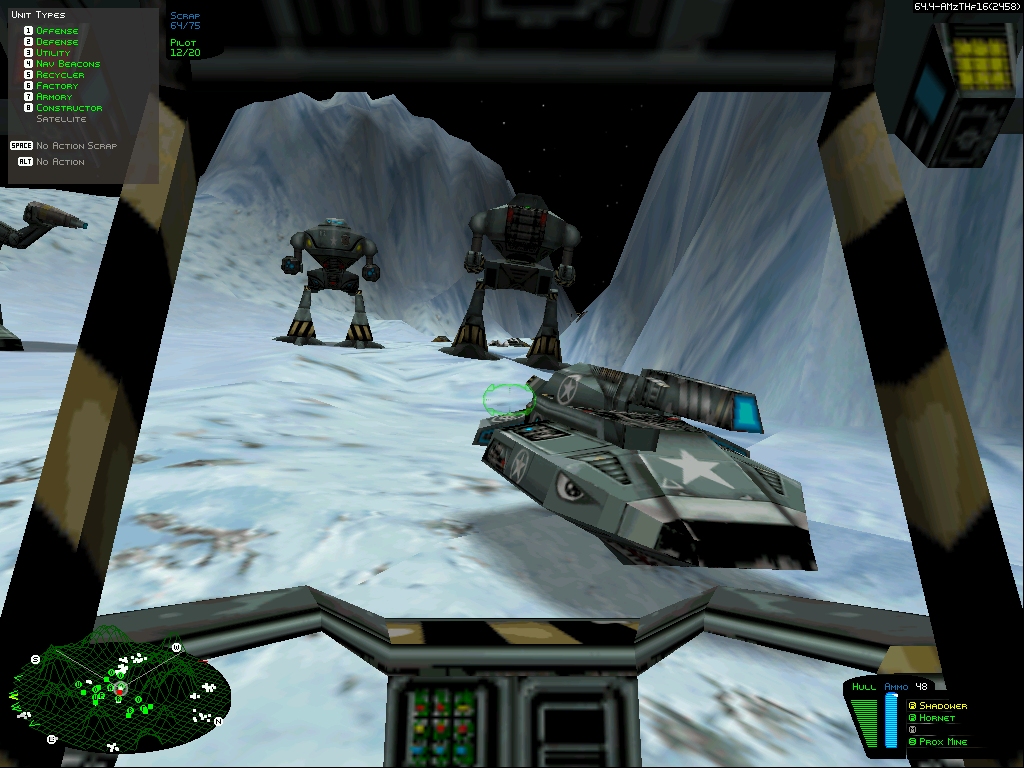
Like model railways and buffalo stampedes, RTS games are much more exciting when viewed from ground level. In Activision’s 1998 chart-topper Battlezone, the only time you see your units from a traditional StarCraftian perspective is when you’re hurtling through the heavens after an emergency ejection, or standing on a mountain peak gazing down on them. Either way it’s a fleeting moment of disconnection. Before long you are back where you belong, down in the dirt, rubbing shoulders, wheels, and hov nozzles with your men and your enemy.
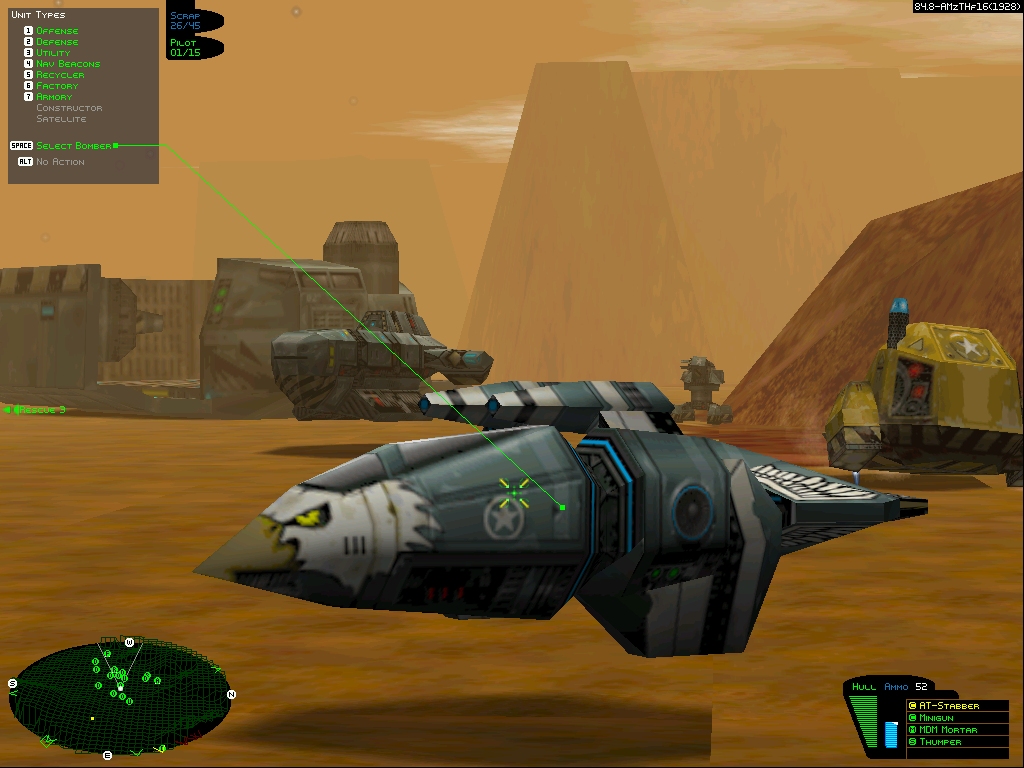
Activities that feel flatter than Panzer roadkill in other games, feel gripping in this one. Establishing that base, escorting that convoy, chaperoning those resource collectors… when you’re leading from the front, or surrounded by a hive of self-sparked activity, even the most basic RTS chores feel fresh and rewarding. Half the thrill comes from a sense of personal power and peril, the other half from the feeling of surrendered omniscience.
When something goes wrong on a Battlezone battlefield, instant perfectly-tailored remedial action is usually not an option. Engagements often occur miles away from your avatar. A few blips on the mini-map, some panicky comms reports and disturbing nav beacon pictures, may be the only indications you have that a full-scale base assault is under way. Do you drop everything and high-tail it back to the ranch, or trust in your carefully layered turret defences and minefields – perhaps supplementing them with a hastily manufactured hover tank or two? For decades strategy game designers have been finding cleverer, slicker ways of giving us control and information. Battlezone suggests a few more of them should have been moving in the opposite direction.
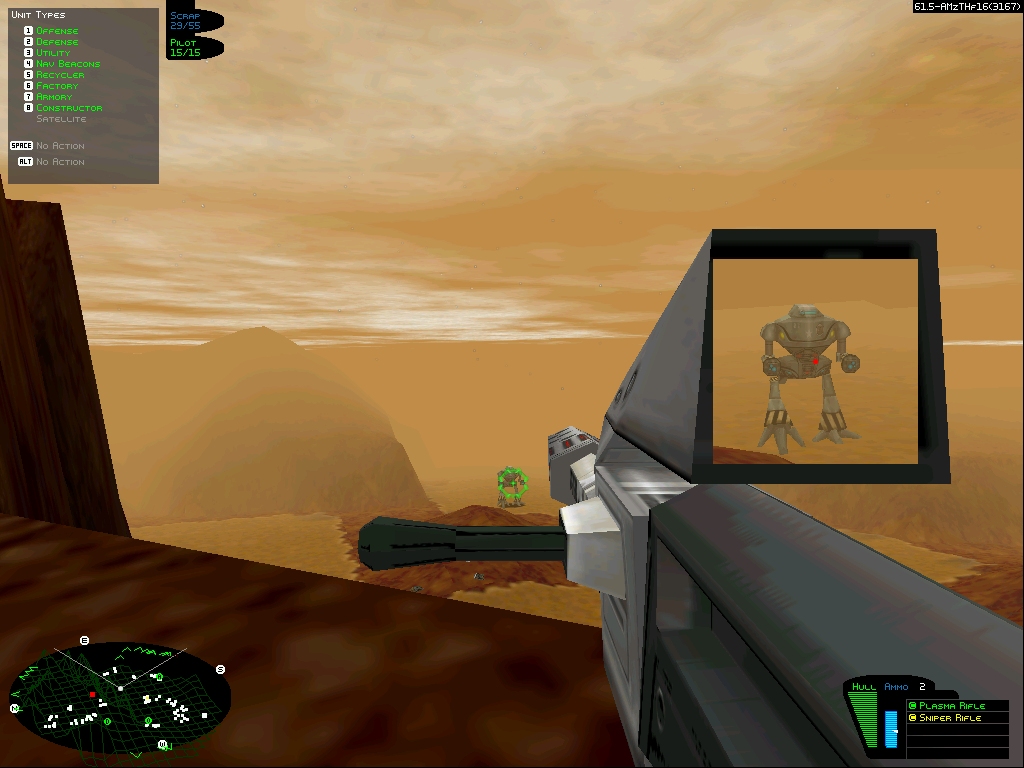
The first-person perspective also brings with it a sense of scale and spaciousness you just don’t find in the standard birds-eye RTS. The simple act of scouting levels can be pleasurable. One early mission places you in a tank and tasks you with taking-out a series of mountain-top artillery positions. As you buzz down canyons and up slopes, it becomes obvious that the only way to bring your mortars and cannons to bear on the high-altitude batteries is to jump-jet across gulleys, exploiting momentum and natural rock ramps. Soaring sideways across yawning voids with guns ablaze, the tone effortlessly shifts from Command & Conquer to Tribes or Unreal Tournament.
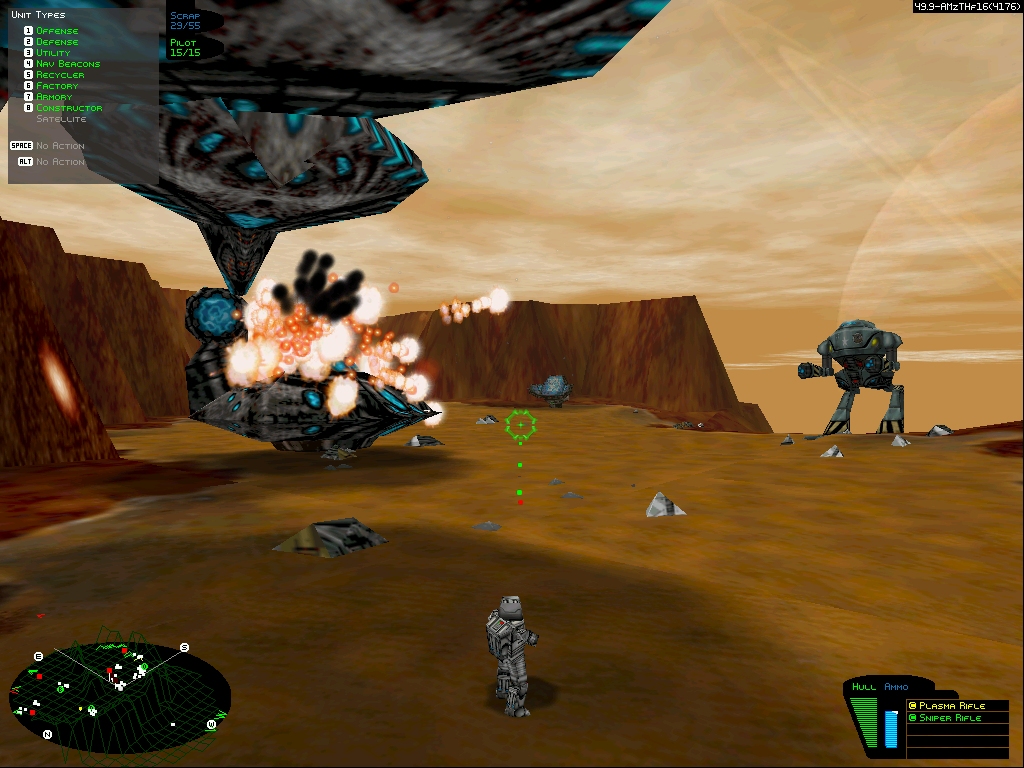
At other times the acreage of the arenas and that novel perspective conspire to produce an almost Operation Flashpoint or Arma mood. When you’ve been forcibly expelled from the protective cocoon of a walker or tank, and find yourself trudging along with just a plas rifle and spacesuit for company, there’s that same sense of vulnerability you get from a Bohemia Interactive excursion gone wrong. The little man abroad in a big hostile world. Of course, in Battlezone with a couple of key presses a friendly unit can be racing towards your position to pick you up. Why walk all the way home when an obliging underling will foot-slog for you?
Pilots are one of two resources in the game, which makes elimination of enemy crew all the more satisfying. Split-seconds before a fatally damaged vehicle disintegrates, it spews its human operator high into the air. These reluctant pedestrians land some distance away then yomp back to base where they can be assigned new rides. Not all of them get home in one piece. On spying a red-suited runner, it takes a lot of willpower not to gun your engine and speed towards them cackling manically. A few tons of Grizzly bursts fleeing foes like they were cartons of Innocent’s sadly discontinued raspberry, goji berry, & offal smoothie.
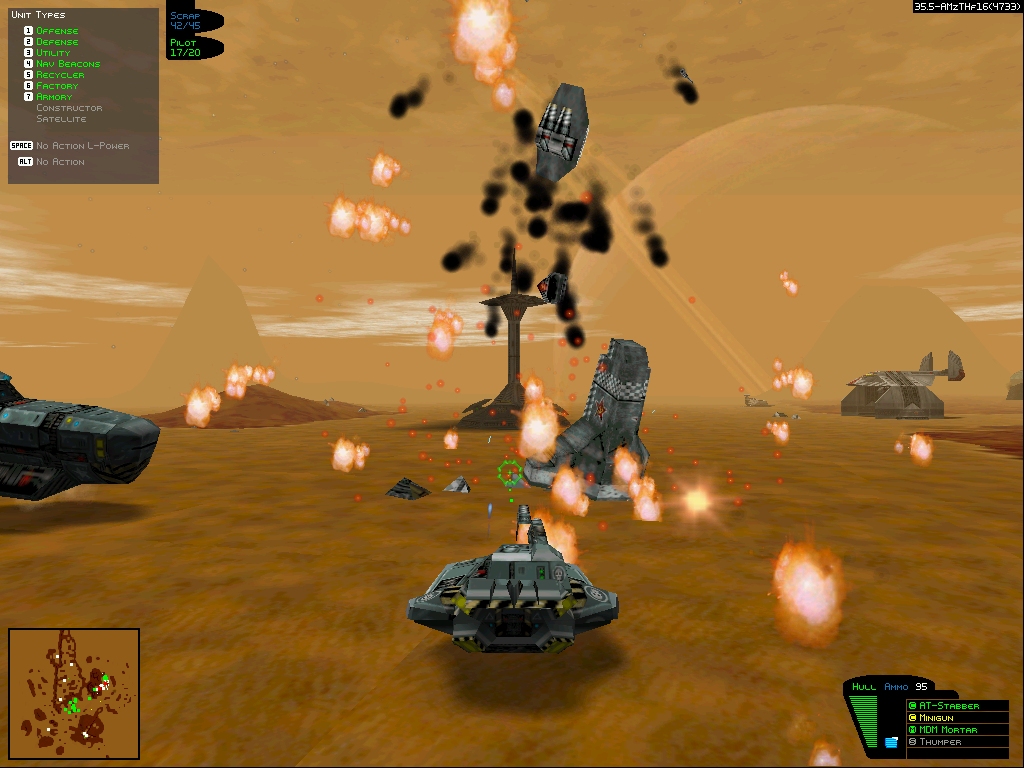
Vanquished vehicles produce deposits of the game’s other resource – scrap metal. One of the first tasks in most missions is to find a geyser (major structures must be placed atop them) for your mobile recycling plant, then produce a couple of scrap-gathering drones. A brilliant interface means actions like this are a breeze. Anything from giving a scavenger a bodyguard, to ordering an ammo delivery to a forward position, rarely involves more than two clicks. Entire bases can be packed-up and remotely relocated in the time it takes to find an order sub-menu in Arma 2.
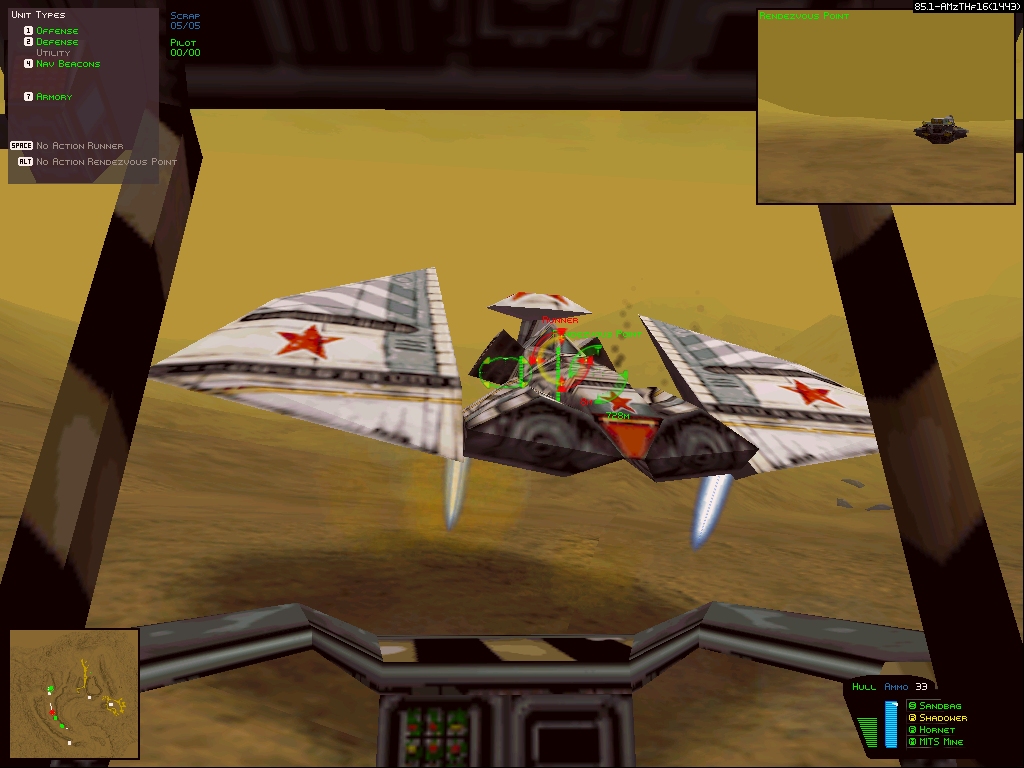
The masterful UI becomes increasingly important as the 25-episode campaign gets into its Solar System-spanning stride. What starts as a lunar war between resource-hungry Soviet and Western expeditionary forces, takes an apocalyptic turn with the discovery of alien relics on the surface of Mars. Though the odd mission kicks itself in the groin with poorly communicated objectives or over-sensitive failure triggers, most are riveting playgrounds in which experimentation isn’t just encouraged it’s essential. As in all the best tactical diversions, there’s room to make mistakes and indulge silly infatuations with particular units. You want to drive the Communist Cosmonaut Army back into the lava sea with nothing but howitzers and homing missiles? Go right ahead. Fancy stomping your way to victory with mechs, mechs and more mechs? Mech yourself at home.
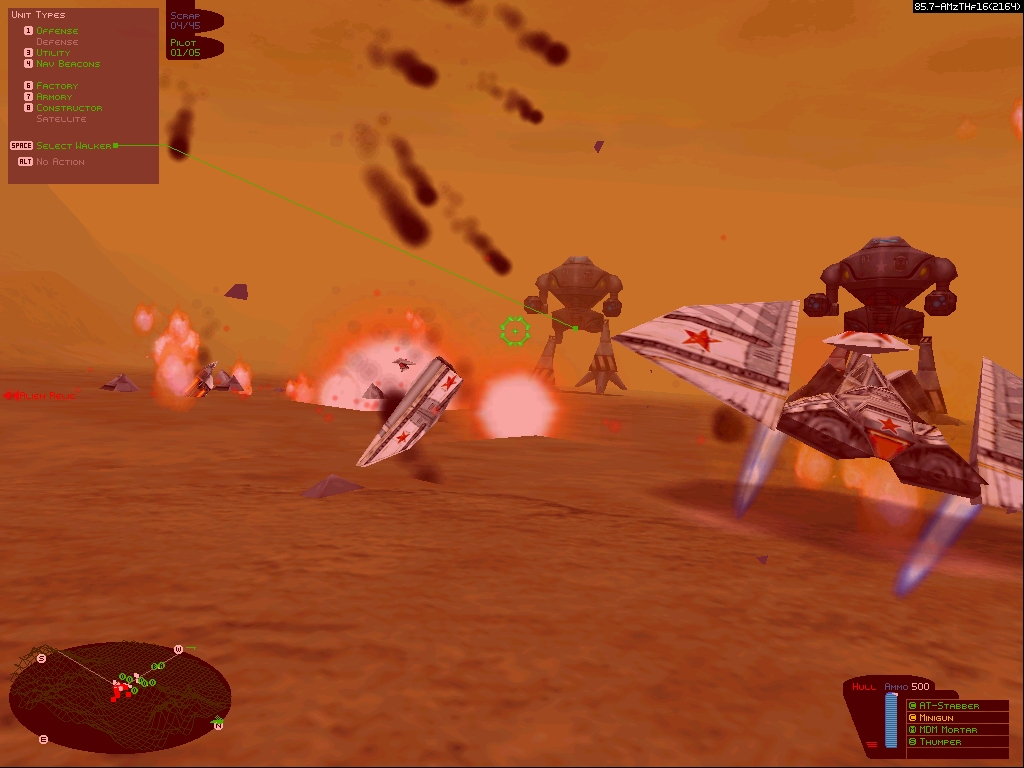
Weapon customisation adds an extra layer of delicious hmmm to the standard RTS unit dilemmas. Armouries (structures able to catapult repair, ammo, and equipment packs to any point on a map) can also airmail new arms. Should you find your path blocked by a gang of unexpected Golems, a ground-shaking Thumper cannon can be lofting its way to you in seconds. Create caches along a retreat or advance route, and you should be ready for any eventuality.
Fancy tactics are optional in the campaign but in multiplayer you’ll struggle unless you’ve grasped the finer points of cache depositing and weapon use. BZ features two straightforward but highly entertaining communal modes. Deathmatch offers missile-rich vehicular combat with a dash of cagey sniping stirred in. Strategy mode is BZ at its brilliant best – a rich RTS experienced and orchestrated from the cockpits of various hovering, hurtling hurt-machines.
StarCraft 2? No thanks, I’m good.

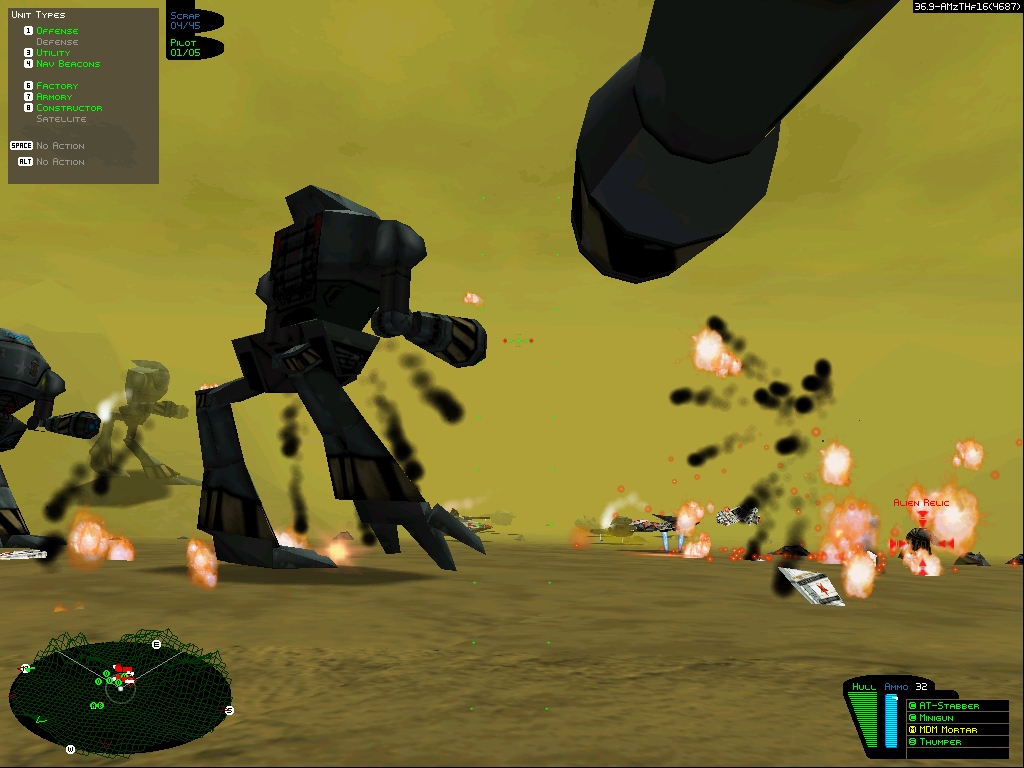
I loved both BZ and BZ2 back in the day. Never really touched multiplayer, but the single player campaigns gave me many hours of enjoyment.
I think the only other game that had felt as fresh as that back in the day was the original Carrier Command on my trusty old Atari.
I am thrilled to see this here. Battlezone is in fact my very favorite game of all time, for many of the reasons you describe here. It is to me one of the enduring mysteries of human existence that the game has never gotten much traction either in its original release or its just-as-quickly forgotten 2016 remaster (Battlezone 98 Redux), or that no other developer has made a serious effort to replicate its wondrously fun mechanics. Play this game now!